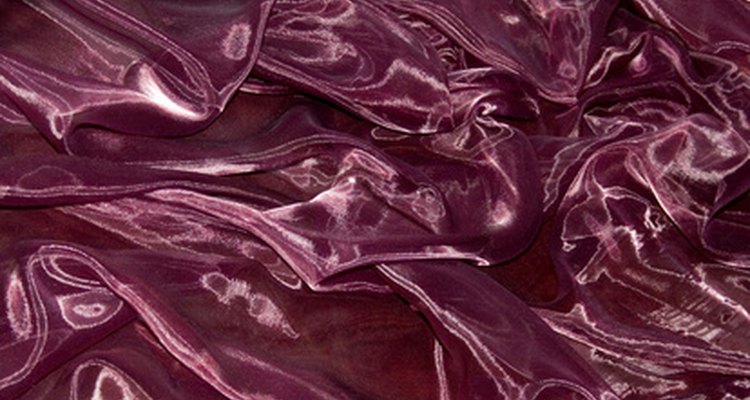
Buying an expensive satin gown off the rack for any occasion can be trying. It's almost expected that you'll need to make alterations since every woman's proportions are a little bit different. If you need the gown to fit you just right, the seams have to be altered to fit your precise measurements. If you have some sewing experience already and are comfortable working with fabric, you can save money on alterations by doing them yourself rather than going to a professional tailor. You need to be careful when you're working with satin so as not to damage the delicate fabric.
Take your measurements with the fabric tape measure and compare them to the gown's measurements to determine where and how much you need to alter the gown. Try the gown on and note where the seams are too tight or too loose, or where the hems are too long or too short. For the most accurate measurements, have a friend help you.
Alter the hemlines if necessary. To alter the hem, stand in front of a mirror with the gown on and work with a friend to mark a new hemline. Mark the hem with straight pins in an even line all the way around the hem of the gown. Keep the pins close together, and measure up from the floor if necessary to ensure the new hemline is even.
Take the gown off and iron the satin carefully to press a crease where the new hemline will be. Iron the wrong side of the fabric. Do not use steam, as this may cause water spots on the satin fabric. Test a scrap of the fabric first, if possible, for heat and discoloration before ironing the gown itself. Do not overpress. Overpressing can ruin satin fabric.
Finish the raw edge of the fabric before sewing the new hemline. Always finish raw edges on satin because it is prone to raveling. Use a straight stitch along the edge of the hem, 1/4 inch from the edge, and overcast the edge with a zigzag stitch on the sewing machine. If you're letting the hem out rather than shortening it, finish the raw edge by applying bias tape. Lay the tape across the edge of the fabric, straight stitch into place 1/4 inch from the edge, turn the tape up so the raw edges are underneath it and press the seam open.
Stitch the hem into place. Use a hemming stitch or slipstitch. It's recommended that you hem by hand, catching threads in the hem edge and the gown itself.
Open seams that are too tight. If the sleeves are too tight, remove the entire sleeve to make alterations in the fit, then reattach. Work extremely carefully with a seam ripper to open the seams where necessary. Holes made from thread and needle are permanent, and tend to show especially well in delicate fabric like satin. Working roughly will only damage the fabric and cause visible holes or small rips.
Pin the fabric where necessary to mark new seams. Pin only within the seam allowances, not the fabric of the gown that will be visible later when the gown is worn. Every hole made in satin shows more easily than with other fabrics. When cutting excess fabric, use scissors that are as sharp as possible. Only the sharpest scissors will avoid snagging the fabric.
Related Articles

How to Sew With Hem Tape

How to Line a Wedding Gown

How to Hem a Sequin Dress

Steaming a Chiffon Wedding Dress

How to Alter Pajama Bottoms

How to Take up the Shoulder Seams in a ...

Types of Pant Hems

How to Hem a Bridal Gown From the Waist

How to Lengthen a Suit Jacket

How to Hem a Shirt Collar

How to Hem a Formal Dress

How to Make an Alteration to a Lined ...

How to Create Pencil Edging on a Veil

Adding Cap Sleeves onto a Wedding Gown ...

How to Make a Child's Graduation Gown

How to Hem T-Shirts

How to Fix a Low Neckline on a Wedding ...

How to Cut Out the Tulle for Your Veil

DIY Taking in Blouses

How to Make a Dress Poof
References
Writer Bio
Michelle Labbe has been writing online and for print since 2004. Her work has appeared in the online journals Reflection's Edge and Cabinet des Fées as well as in Harvard Book Store's anthology, "Michrochondria." She is pursuing a Master of Arts in publishing and writing at Emerson College.
Photo Credits
satin surface image by Aleksej Kostin from Fotolia.com